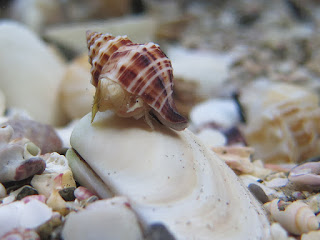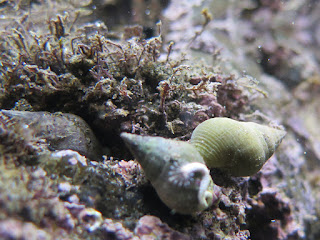 |
| A large female giant squid at AUT, 2004. |
 |
| Three giant squid, defrosting at AUT, June 2014. Squidcicles... |
 |
| The least damaged of the three, being made ready for a live dissection webcast, June 2014. |
 |
| Giant squid sucker rings from a large female. These are this colour due to being kept in alcohol since 2008. |
 |
| A giant squid sucker ring from a large female. |
 |
| A giant squid sucker attached to a tentacle. |
 |
| Another giant squid at AUT, 2008. |
Arguably, the biggest piece of misinformation regarding giant squid is their size; they don't get as large as has been reported, but, you can make them quite long if you really stretch the tentacles. The body gets to about 2–3m, while most of their length is made up the feeding tentacles, which can be several metres long. So they can get to around 10–13m in total length depending on which sex they are; females are larger. Also, they can't sink ships.
Ecologically giant squid are thought to be ambush predators, hanging inert in the water column waiting to snatch prey with their two long feeding tentacles. in turn they are preyed on by sperm whales. Stranded sperm whales (Physeter macrocephalus) are often seen with head scars from the suckers of giant squid they have attacked (and probably eaten). It's unlikely that a giant squid would have much of a chance against a sperm whale.
In the past giant squid were really only seen when they washed up (usually quite damaged). However, these days they turn up as bycatch in deep-sea trawl fisheries. In New Zealand waters they are occasionally taken as bycatch in the hoki fisheries off the west coast of the South Island.
One last point: you can't eat them, as they are filled with ammonia. The ammonia ions are lighter than water, so it is thought that is aids in buoyancy.
Here's a video of giant squid expert Dr. Steve O'Shea examining a giant squid at AUT in 2008 (he's a bit sweary, so nsfw).
More info:
http://squid.tepapa.govt.nz/resources
https://www.tonmo.com/pages/architeuthis-age/












































